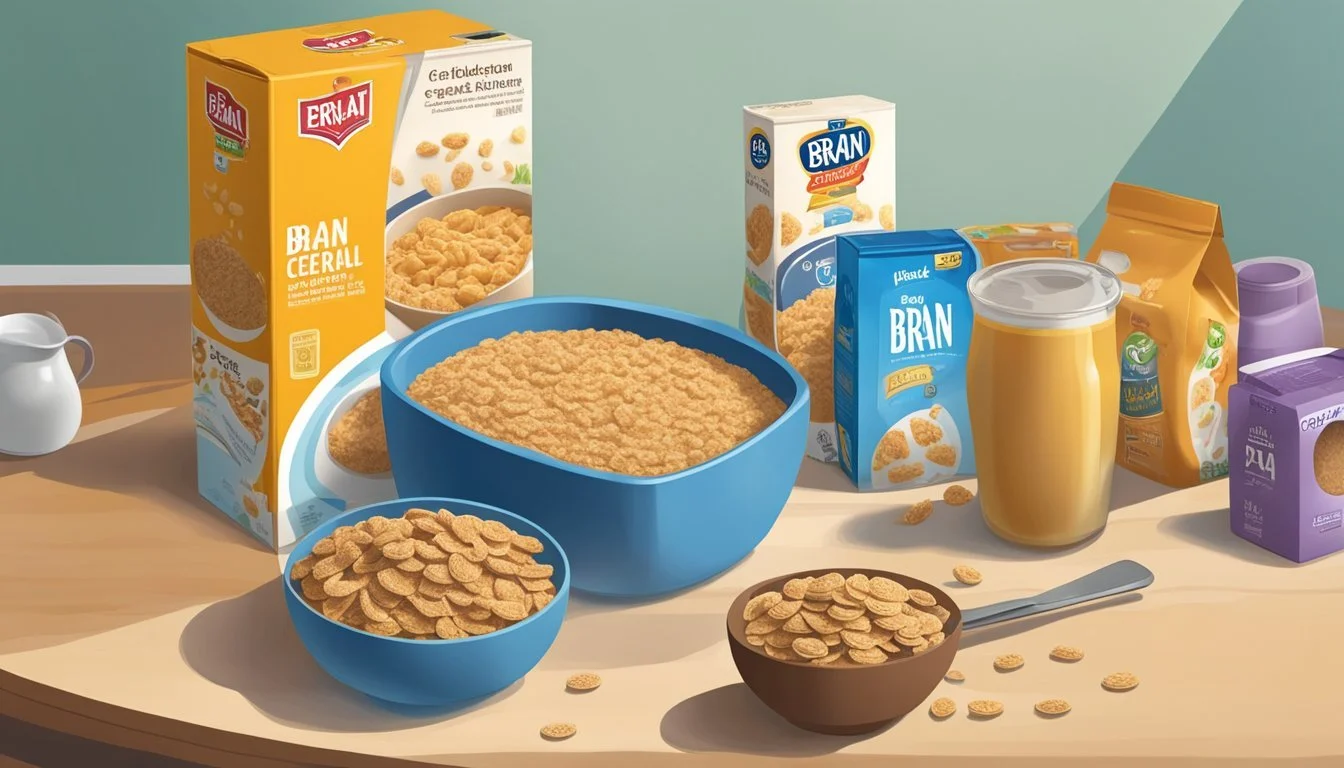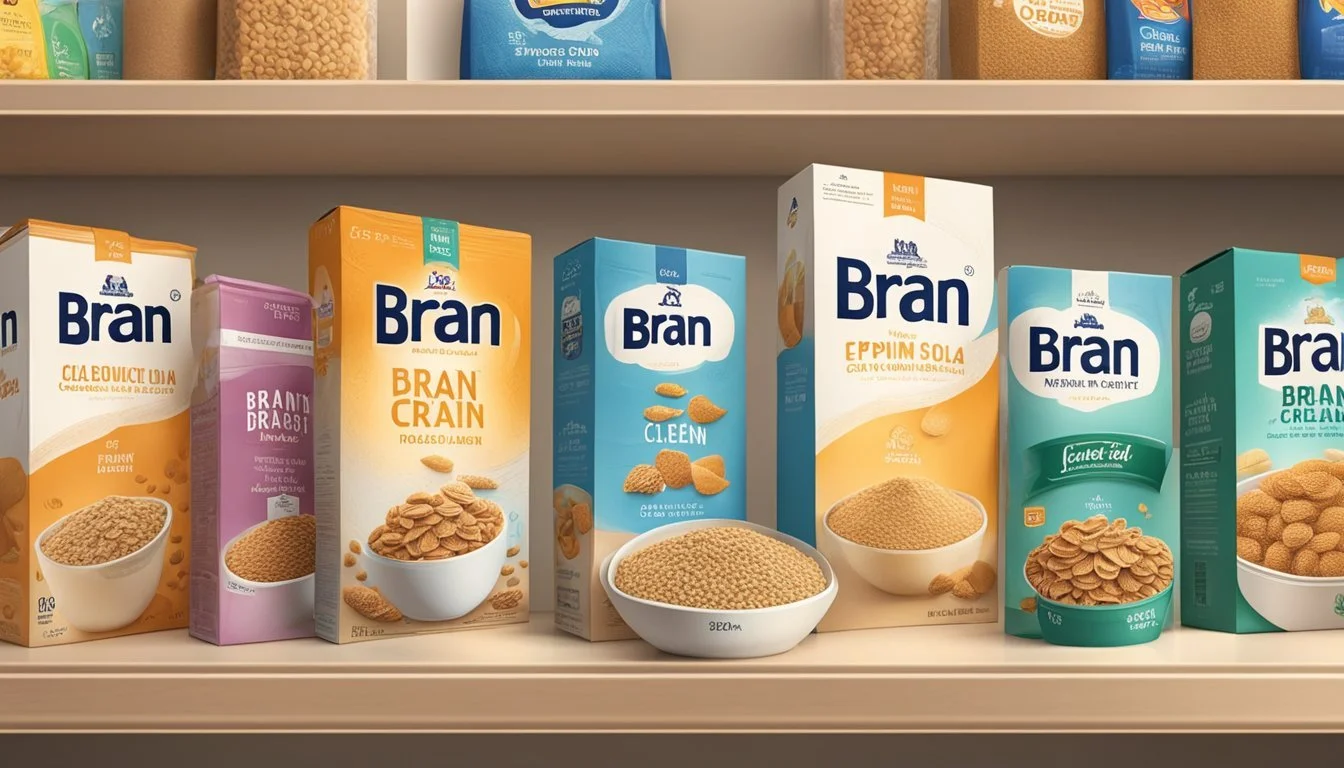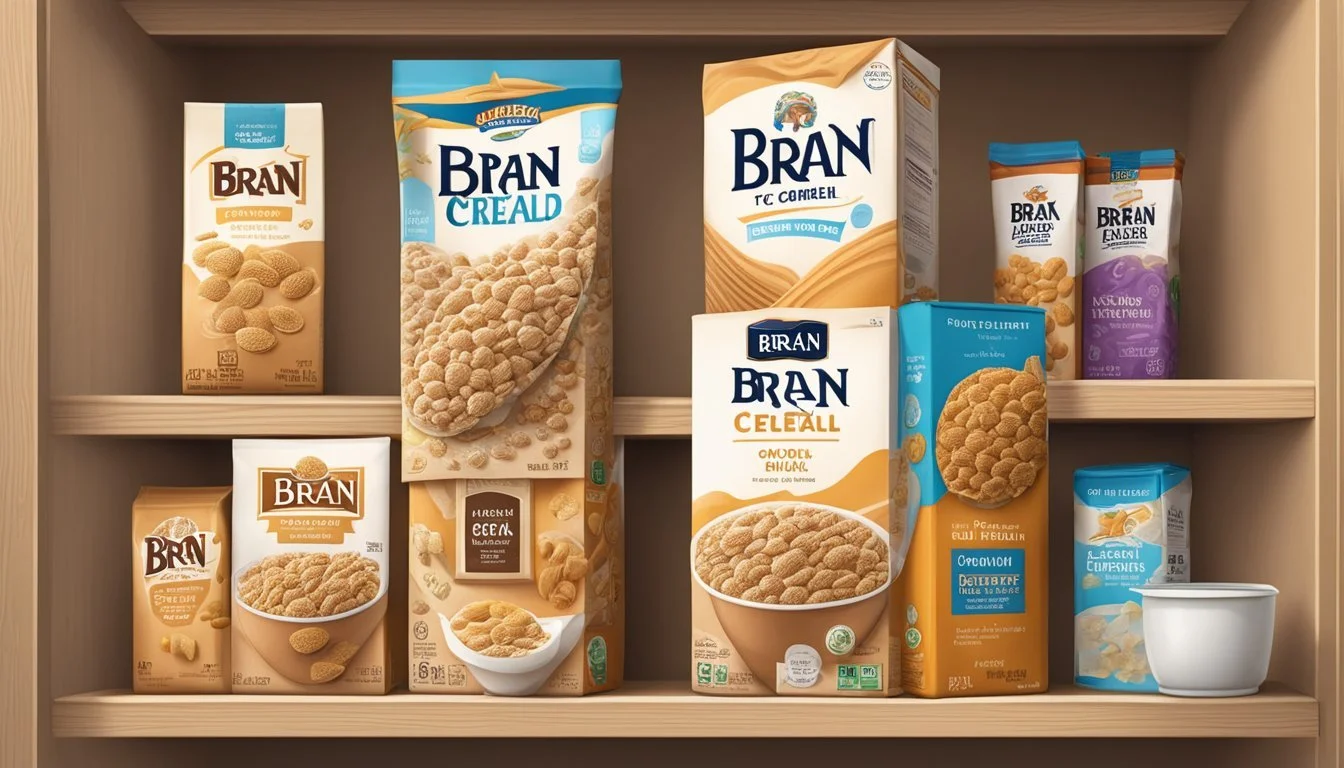How Long Does Bran Cereal Last?
Shelf Life and Storage Tips
Bran cereal is a staple in many households for its nutritious value and fiber content, but there's often confusion about its shelf life and how long it retains its quality. Typically, the longevity of bran cereal depends on its packaging, storage conditions, and whether it is opened or unopened. Properly stored in a cool, dry place, an unopened package of bran cereal can maintain its best quality for several months past the expiration date on the label.
Once opened, the clock starts ticking on the freshness and taste of bran cereal. Exposure to air, moisture, and varying temperatures can all contribute to a decrease in quality, potentially leading to staleness. It is generally recommended that bran cereal be consumed within one to four months after opening to enjoy its optimal quality. Transferring the cereal to an airtight container can extend its freshness and prevent the cereal from absorbing moisture and odors from other pantry items.
Overall, while expired bran cereal might not necessarily pose a health risk, the sensory qualities such as texture and taste may decline over time. Consumers should trust their judgment when assessing if the cereal has retained its quality, considering factors like appearance, texture, and odor, in addition to respecting the 'best by' date for the best eating experience.
Understanding Cereal and Bran
When discussing cereal shelf life and overall benefits, it's essential to understand the key components of cereal grains, specifically the role and benefits of bran, which is critical both nutritionally and for its longevity.
Cereal Grains Overview
Cereal grains, such as wheat, oats, rice, and barley, are the seeds of grasses cultivated for consumption. They are commonly used in a variety of foods, including breakfast cereals. Whole grain cereals include all three parts of the grain kernel: the bran, the endosperm, and the germ.
Bran: What is it?
Bran is the hard, outer layer of cereal grains. It is high in fiber, both soluble and insoluble, and other nutrients such as iron and B-vitamins. When grains are refined, the bran is often removed, reducing the fiber content and affecting the shelf life of the cereal.
Nutritional Profile of Bran Cereal
Bran cereal specifically refers to cereal products that are high in bran content, thus offering a rich source of:
Dietary Fiber: Helps with digestion and can aid in weight loss
Iron: Essential for oxygen transportation in the blood
Other Nutrients: Includes carbohydrates, fatty acids, protein, and B-vitamins
Nutritional content per serving may vary by brand and type, but bran cereal is generally low in fat and calories, making it a nutrient-dense food choice.
Health Benefits of Bran Cereal
Regular consumption of bran cereal can contribute to various health benefits:
Digestive Health: High fiber content aids in maintaining regular bowel movements, helps prevent constipation, and can reduce the risk of colon cancer.
Weight Management: The fiber in bran contributes to a feeling of fullness, potentially assisting with weight loss.
Heart Health: Soluble fiber from bran can help lower cholesterol levels.
Incorporating bran cereal into one's diet offers a straightforward way to increase overall nutrient intake while also potentially reducing health risks.
Shelf Life and Storage Factors
Understanding the shelf life of bran cereal and the factors affecting its freshness can ensure that consumers enjoy their cereal at its peak quality. Proper storage techniques are essential to maintain the cereal's integrity from the date of purchase to the last bowl.
Cereal Expiration and Best By Dates
Bran cereal typically comes with a best before or use by date which suggests the timeframe during which the product is expected to retain top quality. It's important to note that best if used by dates are not expiration dates; rather, they reflect the manufacturer's estimate of when the cereal is at its peak freshness.
Unopened cereal can last:
Up to 6-8 months past the best by date: maximum freshness when stored optimally.
Opened cereal is best enjoyed:
Within 3-4 months: retention of quality depends on storage after opening.
Optimal Storage Conditions
To maximize the shelf life of bran cereal, it should be stored under optimal conditions. This means keeping it in a dry, cool, and dark place, such as a pantry. The best temperature is generally around 70°F or below. Exposure to heat, light, or moisture can hasten the degradation of the cereal's quality.
Recommended storage:
Pantry: best for short-term storage of opened and unopened boxes.
Refrigerator/Freezer: possible but not usually necessary for dry cereals like bran.
Factors Impacting Cereal Freshness
Several environmental factors can impact the freshness of bran cereal. Maintaining a stable environment minimizes exposure to factors that can compromise the cereal's integrity:
Moisture: the primary enemy, leads to sogginess and spoilage.
Temperature: fluctuations can accelerate the staling process.
Air: oxygen can degrade quality over time; airtight containers are recommended.
Light: can cause nutrient degradation and potential flavor loss.
Proper Cereal Storage Techniques
Maintaining the texture and quality of bran cereal relies heavily on the methods and environments chosen for storage. Properly-stored cereal can remain fresh and retain its nutritional value over a considerable period.
Storage Containers and Environment
The choice of storage containers greatly influences cereal longevity. Cereal should be stored in a cool, dry, and dark location, typically found in a pantry or cupboard. The best containers for this purpose are:
Glass jars with airtight seals
Plastic containers with snap-on lids
Mylar bags with oxygen absorbers
These containers protect the cereal from moisture and air, which can degrade the quality and texture of the bran cereal.
How to Store Unopened Cereal
Unopened cereal is best stored in its original packaging, provided it is tightly sealed. If the original packaging isn’t airtight, transfer the cereal to one of the recommended storage containers. Key considerations for unopened cereal include:
Store in a dry, cool environment, away from direct sunlight.
Ensure containers are kept in a stable temperature to prevent condensation.
Best Practices for Opened Cereal
Once opened, the cereal’s exposure to air and moisture becomes a greater concern. To maintain quality:
Reseal the cereal in its original bag, ensuring it’s tightly closed.
If the original packaging can't be sealed, transfer to an airtight container.
To preserve freshness, consider storing cereal in the refrigerator if room temperature isn’t ideal.
Recognizing Spoilage and Staleness
When dealing with bran cereal, identifying whether it's past its prime involves a careful examination of its taste, smell, texture, and appearance.
Signs of a Stale Cereal
Staleness in bran cereal is often noticeable by a lack of crunch when consumed. The texture may become chewy or soggy, deviating from the original crisp quality. The taste can also be diminished or off, lacking the fresh, nutty flavor that bran cereal typically possesses.
Texture: Changes to chewy or soggy from crisp
Taste: Loss of original flavor, possible off-putting taste
Food Safety Concerns
While staleness is primarily a quality issue, spoilage raises food safety concerns. Spoiled bran cereal may exhibit a musty or sour smell, signaling it's unsafe to consume. These olfactory cues are crucial, as they can precede visual signs of mold or contamination. Consuming spoiled cereal can pose health risks due to the potential presence of mycotoxins produced by mold.
Smell: Musty or sour, indicating spoilage
Health Risks: Potential for mycotoxins, causing food safety concerns
When to Discard Bran Cereal
Bran cereal should be discarded if there is any sign of mold or an unusual smell. The expiration date and best before dates are general guides; however, these cues take precedence:
Appearance: Presence of mold or changes in color
Smell: Unusual or sour odors
Texture: Excessive sogginess or change from its natural state
Cereal beyond the best before date without these signs may still be safe to consume but should be assessed with caution to reduce waste and avoid food safety issues.
Consumption and Pairings
When it comes to consuming bran cereal, individuals often seek ways to enhance the flavor and nutritional value. The versatility of bran cereal also allows it to serve as a base for a variety of combinations and alternative breakfast options or even as an ingredient in cooking and baking.
Enhancing Bran Cereal with Add-ins
Bran cereal can be paired with numerous add-ins to elevate its taste and nutritional profile. A popular choice for breakfast is to top bran flakes with fresh fruit such as bananas, strawberries, or blueberries, which adds natural sweetness and color to the meal. Integrating nuts into the mix not only introduces a satisfying crunch but also contributes healthy fats and proteins. For those mindful of their diet, a drizzle of honey or a sprinkle of sugar can enhance the flavor while being cautious of the quantities used.
Fresh Fruit: Adds natural sweetness and vibrant color.
Nuts: Provides a crunchy texture and beneficial nutrients.
Milk: Often combined to soften the flakes, commonly used are dairy, almond, soy, or rice milk.
Cereal Alternatives and Varieties
While bran flakes are a staple, one has various choices to maintain a balanced breakfast rotation. Alternatives like oatmeal or granola are excellent for those seeking a hearty breakfast with a different texture. These options can also be enriched with the same nutritious add-ins as bran cereal. Consumers also have access to an array of prepared cereal options, including various flavors of bran cereals that might incorporate other grains such as brown rice, catering to a broad range of dietary preferences.
Oatmeal: A warm and customizable alternative.
Granola: Offers a more substantial, crunchy option often including fruits or nuts.
Prepared Breakfast Cereals: Available in diverse flavors, potentially integrating bran with other grains.
Bran in Cooking and Baking
Bran cereal's utility extends into cooking and baking, acting as a health-conscious ingredient. They can be crushed and used as a fiber-rich substitute for flour or as a crunchy topping on baked dishes. Bran flakes mixed into bread dough or muffin batter can add texture and enhance the nutritional content, providing a confident choice for those craving fiber-dense, wholesome baked goods.
Substitute for Flour: Bran flakes can be ground and used in recipes to boost fiber content.
Texture in Baking: Incorporate into dough or batter for an enhanced texture and healthy twist.
Incorporating bran cereal into daily meals provides a versatile foundation for building nutritious and appetizing dishes tailored to one's dietary needs and flavor preferences.
Expert Insights and Recommendations
In understanding the longevity of bran cereal, it is crucial to consider the expert guidelines regarding food labeling and dietetic insights into cereal consumption.
Importance of Understanding Food Labels
Labels on food packaging are designed to inform consumers about the contents and longevity of the product. Experts in the field of nutrition emphasize the importance of the "Best By" or "Expiration Date" as an indicator of quality rather than safety. Bran cereal typically lasts:
Unopened: Up to 6-8 months past the date on the box
Opened: 1-3 months when stored in a cool, dry place
The presence of bran in the cereal does not significantly alter these time frames. However, it is essential to store cereal properly in a sealed container to prevent staleness and to maintain its nutritional benefits.
Dietetic Perspectives on Cereal and Bran
From a dietetic standpoint, bran cereal is regarded for its high fiber content, which can aid in weight loss and provide health benefits such as improved digestion and reduced risk of chronic diseases. Dietitians may recommend including bran cereal in a balanced diet but encourage paying attention to the nutritional profile, as some cereals may have added sugars or sodium. To ensure maximum nutritional value from bran cereal, consider these points:
Intact Nutrients: Consume before the cereal becomes stale to retain the intended dietary benefits.
Mindful Eating: Pair with a source of protein or healthy fat to balance blood sugar levels and satiety.
By adhering to the recommended time frames and being mindful of nutritional aspects, consumers can enjoy the health benefits of bran cereal in its peak condition.
Conclusion
When discussing the shelf life of bran cereal, it is essential to differentiate between unopened and opened packages. Unopened bran cereal typically maintains its quality for 6-8 months past the expiration date when stored in a cool, dry place. Once opened, however, the cereal should ideally be consumed within 1-4 months to enjoy its optimal taste and texture.
To ensure bran cereal remains of the highest quality, they should employ proper storage methods. This involves keeping the cereal in an airtight container to ward off moisture and other contaminants. Doing so can help to preserve the cereal's crunchiness and prevent it from becoming stale.
Bran itself is a valuable source of nutrients, notably fiber. Thus, while bran cereal beyond its prime may not pose a health risk immediately, its nutritional value could degrade over time.
Key considerations include:
The presence of oils in bran can lead to rancidity; hence, smelling the cereal before consumption is advisable.
Observing changes in texture, as staleness is a sign that the cereal is past its best quality.
Checking for any unusual odors or discolorations that might indicate spoilage.
Consumers should rely on both the date labels and sensory cues to determine the quality of their bran cereal, ensuring their experience is both safe and enjoyable.








